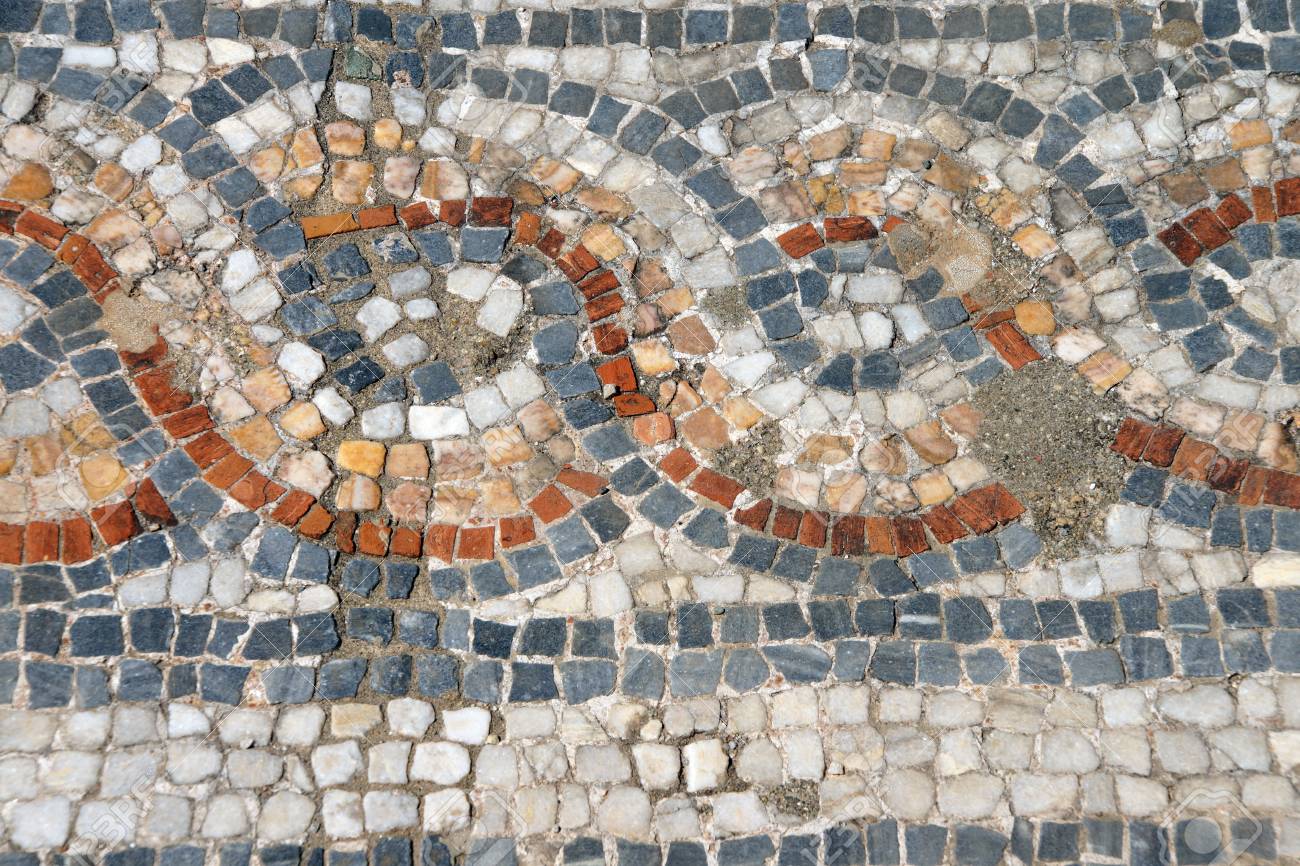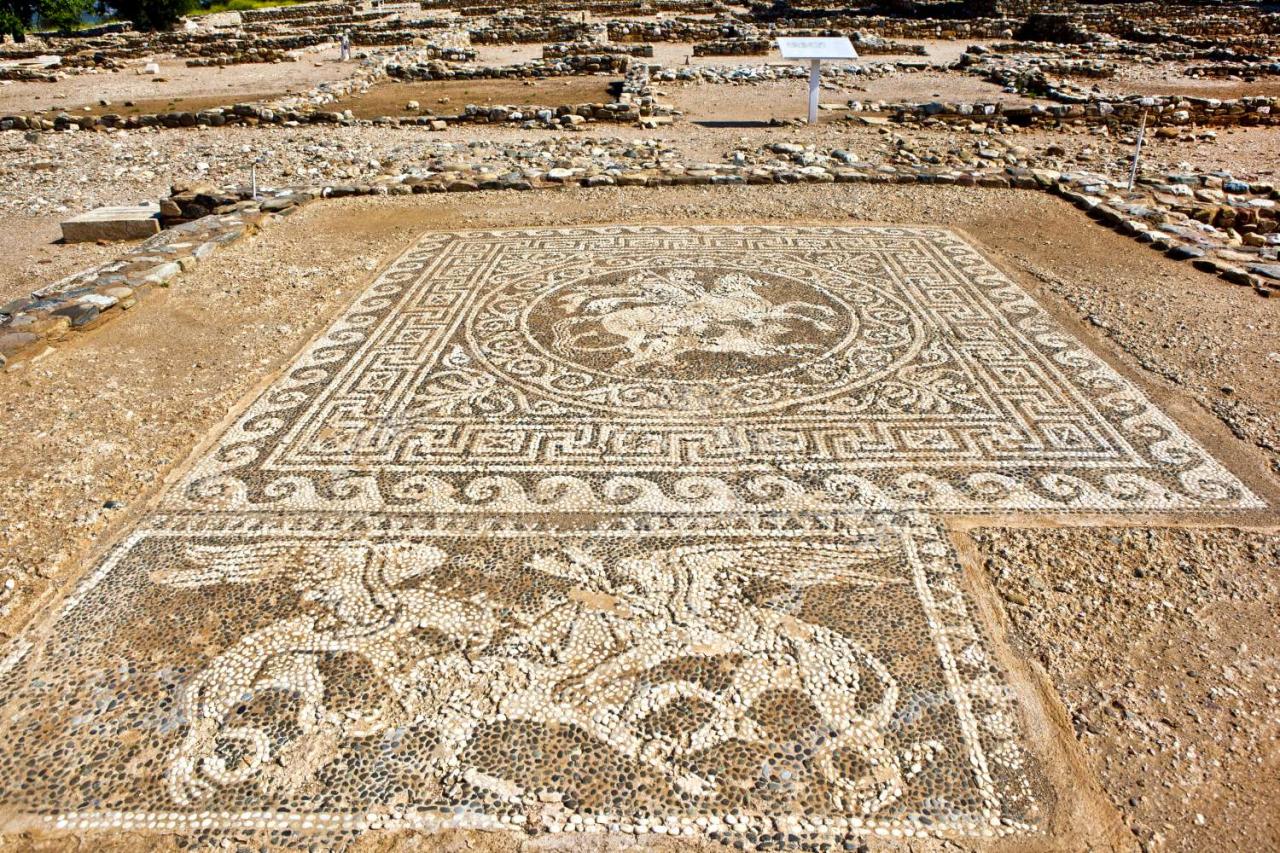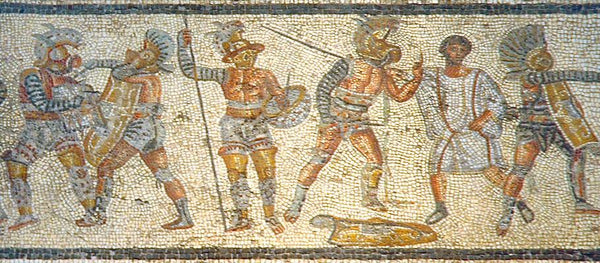The history of mosaics, especially Greek mosaics, is elaborate and winding, extending over a vast passage of time and geography.
From the advent of the art form, to what we know now as mosaic design, Ancient Greek mosaics are as important today as they were thousands of years ago.
What Are Greek Mosaics?
Greek Mosaics, which can be found in parts of Greece and modern-day Macedonia are believed to be the earliest form of the art still in existence today. Before that time, the first ever creations of art resembling mosaics are said to have been laid out in Ubaid, Mesopotamia during the third millennium BC.

Photo credit: sci-news
The most common use of mosaic design in the Greco-Roman world were floor mosaics. These large designs were favored as they are much less vulnerable when buildings collapse. Their durable quality is why we still find many Greek and Roman floor mosaics today.

Photo credit: 123rf
Laying the Foundations
Early Mesopotamian mosaics were made by combining terra-cotta fixtures. Similar to what we now know as mosaic design, these early works of art were limited to red and white and aligned symmetrically – forming a pattern. In addition to decoration, these mosaics also served as protection from harsh weather.

Photo credit: cargocollective
Early Christian Mosaics
It wasn’t until the Ancient Greeks took the art form into their own hands circa 8th Century BC that it became a far more intricate process. This, in turn, shaped the method and technique that is still applied today.
The Ancient Greeks modernized mosaic art by pioneering the use of smaller elements while also introducing the consistent use of geometric symmetries.
Often depicting pagan gods, people and animals, the Ancient Greeks were the first to use what is known today as tesserae or the many small pieces of marble, glass, or tile that comprise a mosaic artwork.

Photo credit: ictaem.org
Vivid Imagery
The spread of this famous Greek mosaic technique initiated the art form, taking it to a higher level while giving way to more vivid detail and imagery. This also lay the foundations for a wider skill set of varying techniques that were all rooted in the same methodology.
With the spread of the Roman Empire, this art form gained in scope and outreach and began to enshrine Roman temples and sprawl across the floors of Hellenistic villas.
Many of the majestic Greek floor mosaics that give testimony to this era in time are still preserved in their ancient molds, interspersed throughout remnants of the once widely encompassing Greek and Roman empires.

Photo credit: escape greece
Countless mosaics in North Africa, Carthage and Tunisia feature many of these famous Greek artworks.
What Are Some Famous Greek Mosaics Facts?
During the Imperial era, a more classical period began for the mosaic art form as it became highly developed and elaborate. New tools were invented that allowed for more intricate and skilled creations.
Artists began thinking outside of the box, literally, while applying the growing mosaic trend to various other aspects of architecture.

Photo credit: du
A Grounded Art Form
Beyond its conventional use of being applied to floor spaces, mosaics were being integrated into other facets of interior architecture. Additionally, an increase in the use of color began to separate mosaics from the world of painting, making it an art form to reckon with, rather than just a substitute for painting.
Mosaics were used as a means of enclosing interior vaults and extending across entire walls, with a unique appeal that in many ways even a painting couldn’t achieve.
This was due to the fact that mosaics had a very durable quality which made them applicable to outdoor areas, something paintings could neither achieve nor withstand. So much so that in time, a reciprocal change came into effect during the Byzantine era. Many Byzantine paintings revealed a new trend towards two-dimensionality, brought on through the influence of mosaic art on paintings.

Photo credit: showcasemosaics
Set in Stone
Ancient Greek mosaics tesserae varied in size. Inlaid patterns’ average tessera would measure approximately 1 centimeter. Further down the timeline, nearing the start of the Medieval times, more mediums became available, giving way to a wider assortment of raw materials. Additionally, the creation of floor mosaics was often a question of employing not only aesthetic elements but also quality materials with resistance to being worn out from being tread upon for centuries to come.
This became the main reason stone was used for early Ancient Greek mosaics. For much of history, the mosaic artist was therefore limited to whatever variations in color the natural stones at hand would provide.

Photo credit: Pinterest
Ancient Greek methods mainly revolved around the use of pebbles, barring the use of mediums such as stained glass. This pebble method soon took on more shape and form with the invention and widespread use of the tessera technique, which evolved even further into the Hellenistic era of Ancient Greek history, and on to the Roman empire.
Pebble mosaics hailing from that era in time in Ancient Greece are today a rarity, and can only be seen in select locations such as Olinthos and Pella, in Macedonia.

Photo credit: Unfamiliar destinations
Pebble mosaics of Olinthos
On the Greek island of Halkidiki, there are several fixtures which house some of these antiquated pebble mosaics, reflecting a wealth of history dating back to 5th Century BC.
The Greek mosaics discovered in Pella and other surrounding Greek cities exemplify the fact that a varied assortment of light and dark colored pebbles was becoming the norm, with beautiful depictions of Greek gods comprising a large majority of them.
This beautiful manipulation of contrast allowed more vivid detail to be interspersed through the use of free mosaic patterns.

Photo credit: Stephens blog
This also became the trend for mosaics that came into being during the Byzantine empire’s era.
Due to the fact that tessera from the archaic period had become more uniform, most tessera would range from a diameter of one to two centimeters. More intricately detailed areas such as faces or clothing would be pieced together using considerably smaller tessera, with even smaller black tessera serving as an outline to the figures.
All of these tesserae were grouted using mortar, which was the staple choice at the time for solidifying the mosaics.

Photo credit: greenwich blog
Pebble mosaics from the House of Pella
The House of Pella also used the pebble technique throughout the 4th century. This widespread use suggests that the technique was being rapidly improved upon. By this point, the level of detail in floor mosaics rivaled that of actual paintings.
While previously limited to naturally colored stones, the artists were now given the added capability of artificially coloring the pebbles as is prevalent throughout several of the mosaic productions at Pella.
This was brought into effect through the introduction of a technique whereby the pebbles would be painted with the desired colors and accented with a depression in their center to protect the film of paint. This was combined with terra-cotta or lead wire in certain instances.

Photo credit: halfmoon yoga and art
Photo credit: scholar exchange
One specific mosaic which is beyond breath-taking features Dionysos, the Greek god of harvest, riding a panther while waving a gold leaf.

Photo credit: awesomestories
Turn of the Century
The next innovation in mosaic design occurred at the turn of the 3rd Century BC, roughly when the pebble technique was abandoned. More finely cut mosaic pieces gave way to fluid masterpieces. New materials, such as stained glass, also brought on new dimensions to the art form. Through the art medium came a new flurry of not only textures but colors as well.
Newly improvised setting techniques brought on smoother textures, allowing more dimensions and means of artistic expression. More intense colors ushered the mosaic art form into an all-new territory that dominates church art as we know it today. It became an art form that had to it even more aesthetic qualities than actual painting, as seen from varying perspectives.

Photo credit: greenwich blog
Multi-faceted
While there are many facets to this millennia-old art form, it is clear that mosaic design is one of the few that has retained its ancient qualities in terms of method and technique. The history of mosaics is ongoing, and while many art forms are beginning to whittle away with the onslaught of digital technology, mosaics as an installation art have existed since the dawn of humanity and continue to persevere in their most basic and natural element.
We hope this synopsis of a brief history of Ancient Greek mosaics served to inspire you to delve further into the magic of mosaics.
For a vast multitude of mosaics, both pre-designed and customizable, please visit Mozaico, a global retailer of all things mosaics.



4 comments
You’re welcome! We’re glad you found it helpful.
Nice post! This is the type of post that needs to be given and not the accidental misinformation that’s at the other blogs. Appreciate your sharing. Kind regards, Floor polishing dubai
Thank you for this beautiful reference
Were these laid directly onto the ground or was some sort of mat employed? Are there artists able to replicate these fine works today, and if so, how do I contact them?